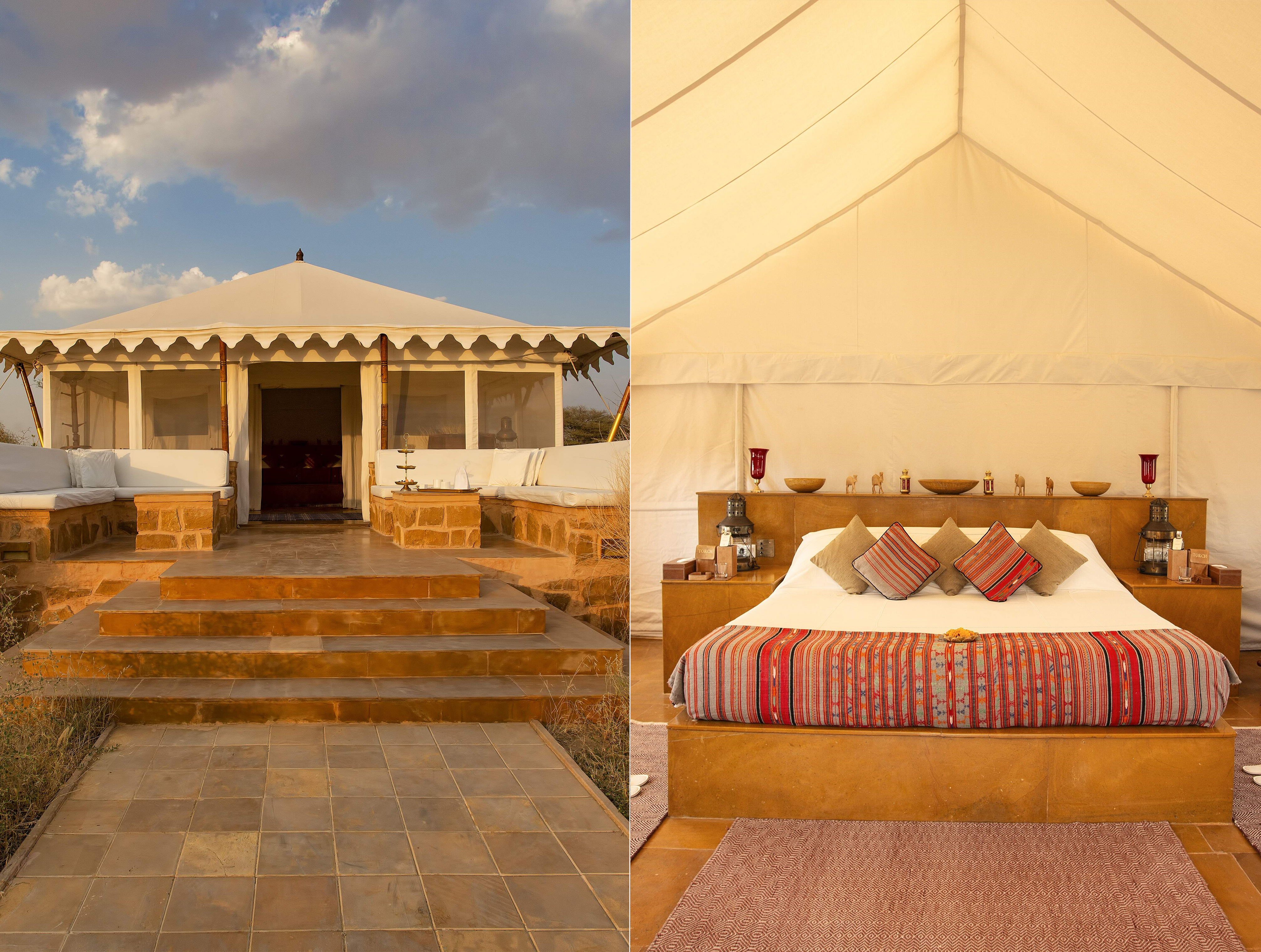- Travel
- Route du bonheur
- En route to architectural treasures
En route to architectural treasures
In 2024, Relais & Châteaux not only celebrates its 70th anniversary as an Association, but the inauguration of its first Route du Bonheur (Road of Happiness).

In 2024, Relais & Châteaux not only celebrates its 70th anniversary as an Association, but the inauguration of its first Route du Bonheur (Road of Happiness).
Today, there are nearly 150 such itineraries globally, showcasing cultural, culinary and natural gems at every stop. This imagined route demonstrates the diversity of the world’s architectural styles that the Association represents.
A palace on the bank of the Nile
Al Moudira Hotel, Luxor, Egypt
The Egyptian architect Olivier Sednaoui and his master masons summoned the full force of their imaginations to fulfill the request–and indeed, the dream–of the Al Moudira Hotel’s former owner, Zeina Aboukheir. Although it was only built on the west bank of the Nile in
1999, its magnificent terracotta arches and domes appear at first glance as if they have been a part of the landscape for thousands of years. From its shady patios to its gardens of palm and lemon trees, this pretty palace offers a secluded place to relax and recuperate between excursions to the nearby Valley of the Kings.
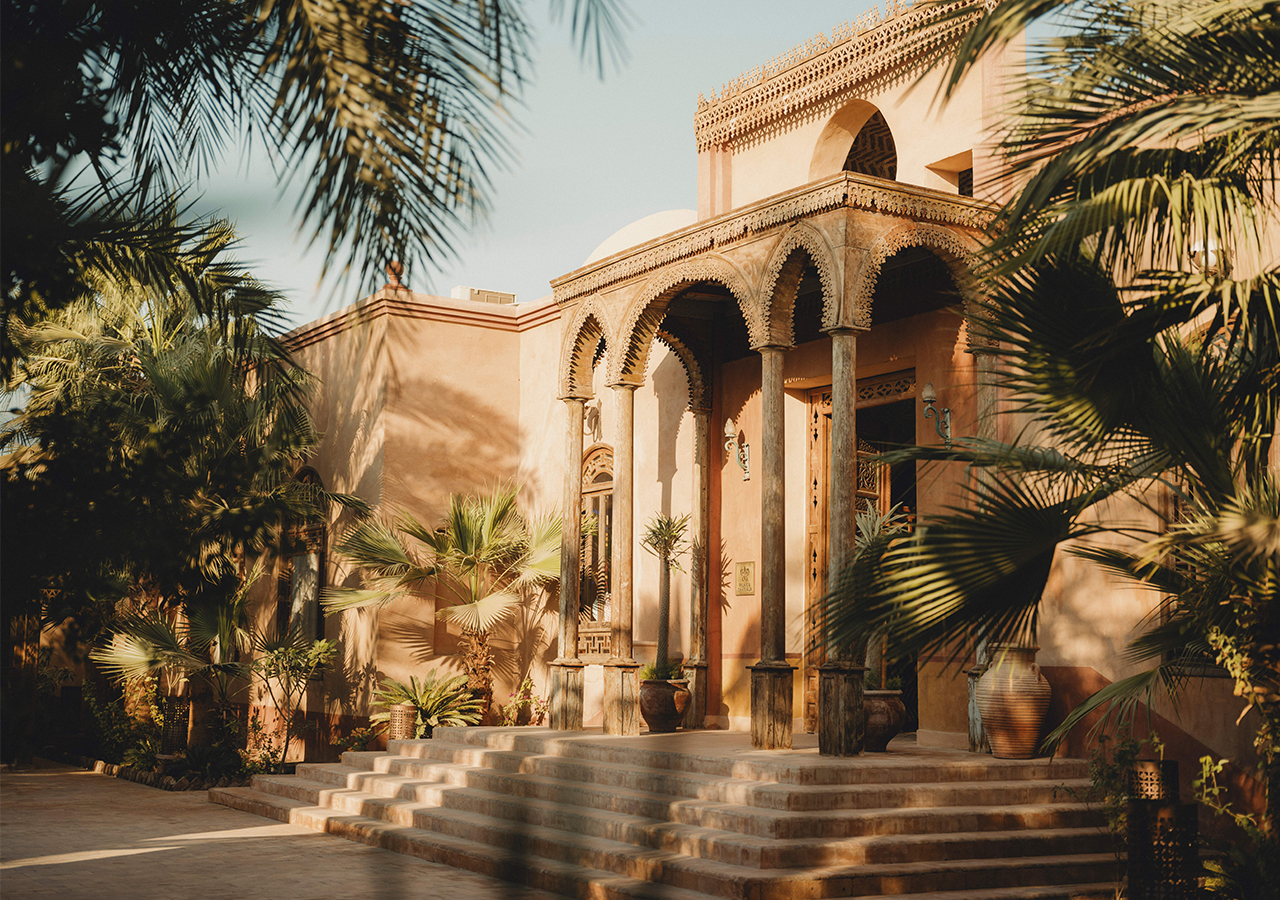
A refuge at the peak of comfort
Hotel Union Øye, Norangsfjorden, Norway
At the tip of the Norangsfjord lies the small, isolated hamlet of Øye, where you’ll find this elegant building, every piece of which was shipped here by boat in 1891. With its architecture of Swiss inspiration, this stone-and-wood haven envelops visitors in hushed splendor. All the materials of the manor harmonize with the majestic natural environment of the Sunnmøre Alps. The conservatory, fireplaces, moldings and extensive library sweep guests into something of a timeless reverie. It feels like a privilege to walk in the footsteps of the collection of writers, climbers, artists and royalty who have all visited to drink in the beauty of the fjords.

An architectural jewel amidst the vineyards
Le Saint-James Bouliac, Bouliac, France
Built in 1989, the Saint-James Bouliac is something of an ‘architect’s hotel.’ Its four contemporary buildings, inspired by the tobacco-drying barns of yore, were designed by the Pritzker Prizewinner, architect Jean Nouvel. Overlooking the vineyards, the city and the Garonne Valley, these buildings offer unique spaces enhanced by large bay windows, offering panoramic views of the landscape. Natural and raw materials find their place here, from each of the guest rooms to the Michelin-starred restaurant.
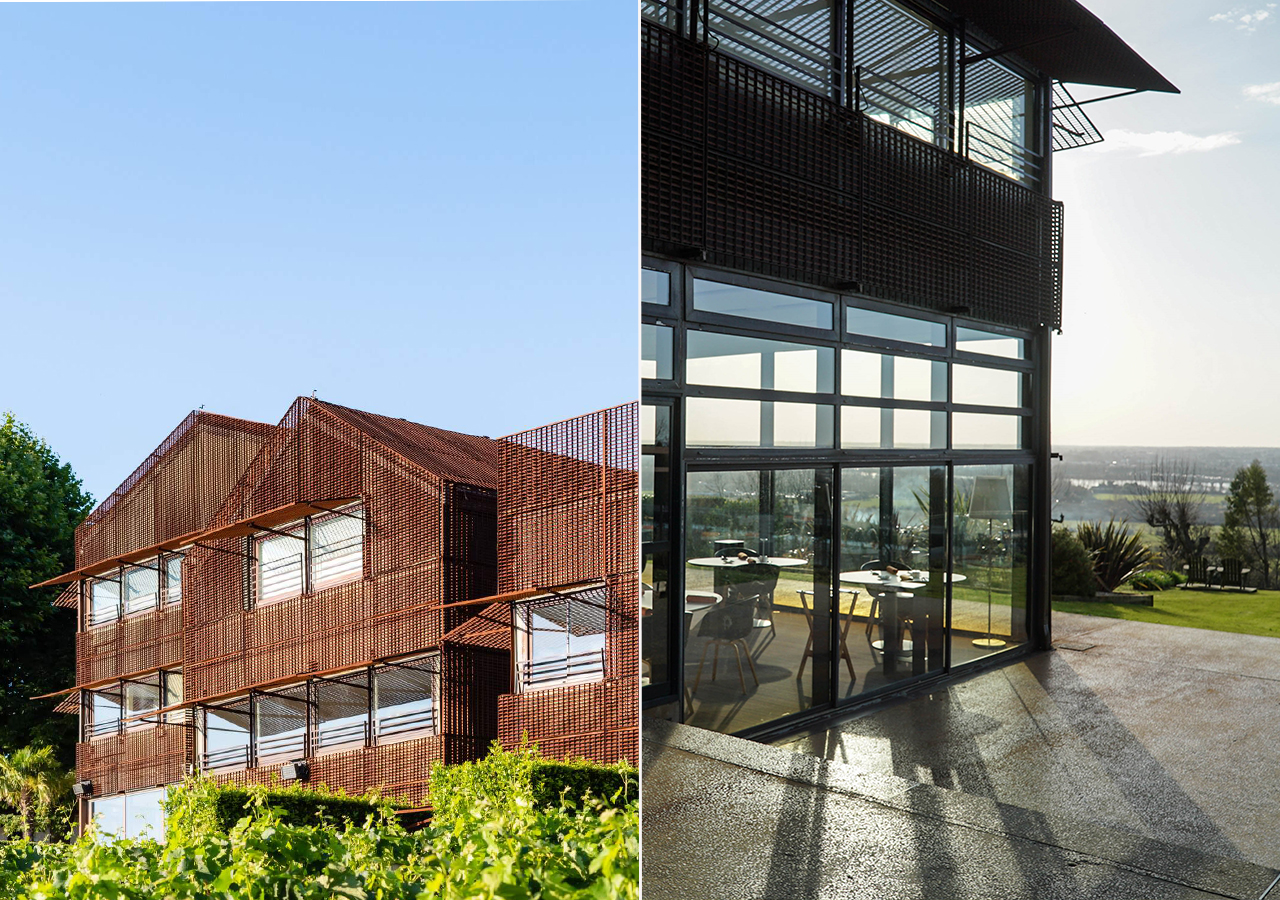
Understated space, ultimate introspection
CIRQA, Arequipa, Peru
This former monastery was built in 1540, the very same year as the historical city of Arequipa. In handcrafted white volcanic stone, with high vaulted ceilings, the monks’ living areas have been converted into 11 very elegant suites. The rooftop offers a view of surrounding volcanoes and of the refinement of this city, which is listed as a World Heritage Site with UNESCO.
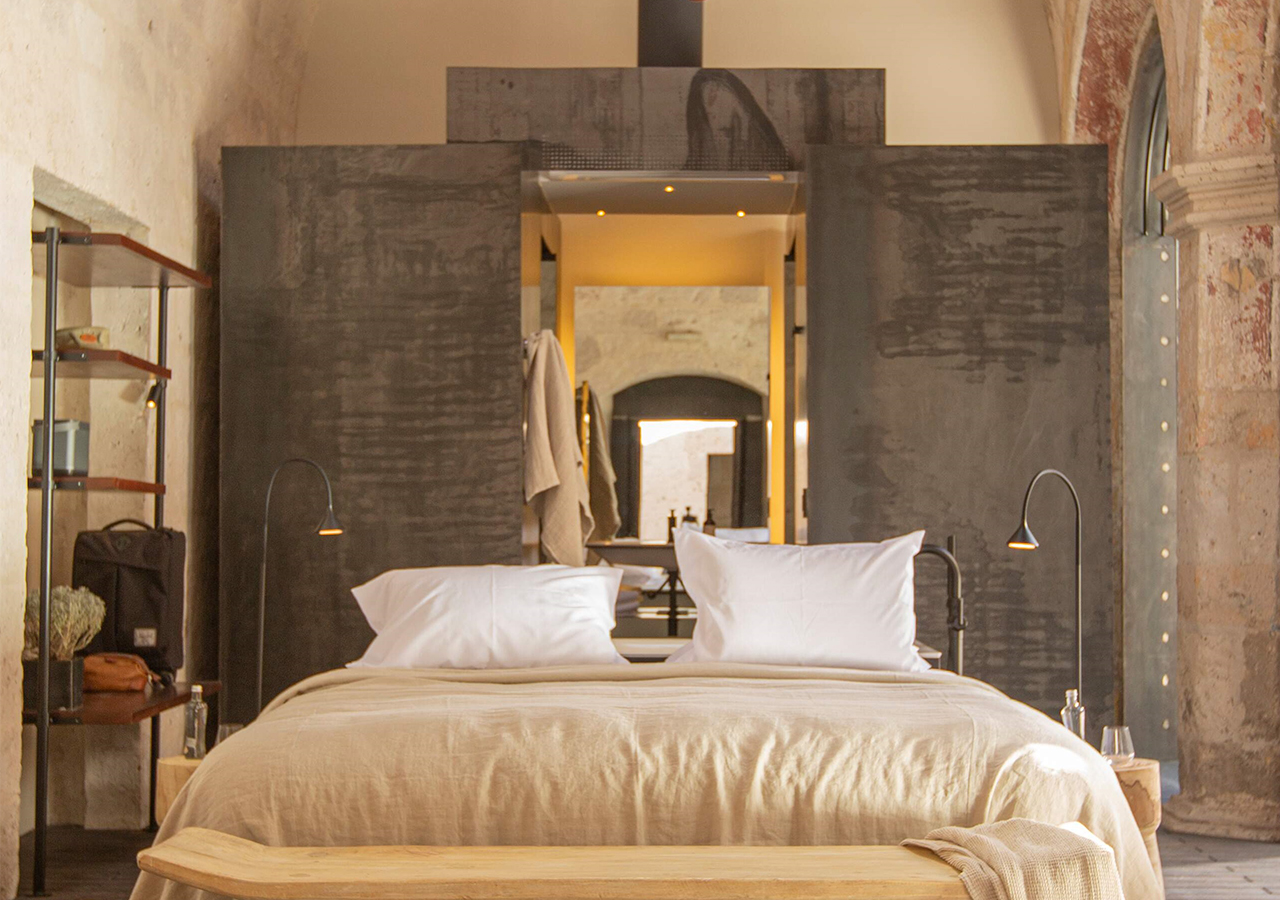
Along the Tao way
Su Shien Valley, Chengdu, China
The backdrop is like an antique engraving from a thousand years ago: here in the Sichuan province, where Taoism first emerged, the hotel Su Shien Valley, new to Relais & Châteaux, is a dream destination for a spiritual retreat. Under lines of tiles redolent of nearby temples (including the breathtaking Jiànfú Gōng), this minimalist setting in light wood, rough stone and flowing lines offers infinite softness and serenity.

A dizzying view onto the wild
Esiweni Luxury Safari Lodge, Ladysmith, South Africa
At the heart of the Nambiti Private Reserve in the Zulu wilderness, the Esiweni Luxury Safari Lodge is both an observation post and a departure point for those seeking to spot the ‘Big Five’. Located at the end of a trail on a cliffside overlooking the brush, savanna and river, its five thatched-roof suites take the form of cocoons that open onto an unspoiled natural environment. From dawn to dusk, the animal world gathers under its panoramic terraces.
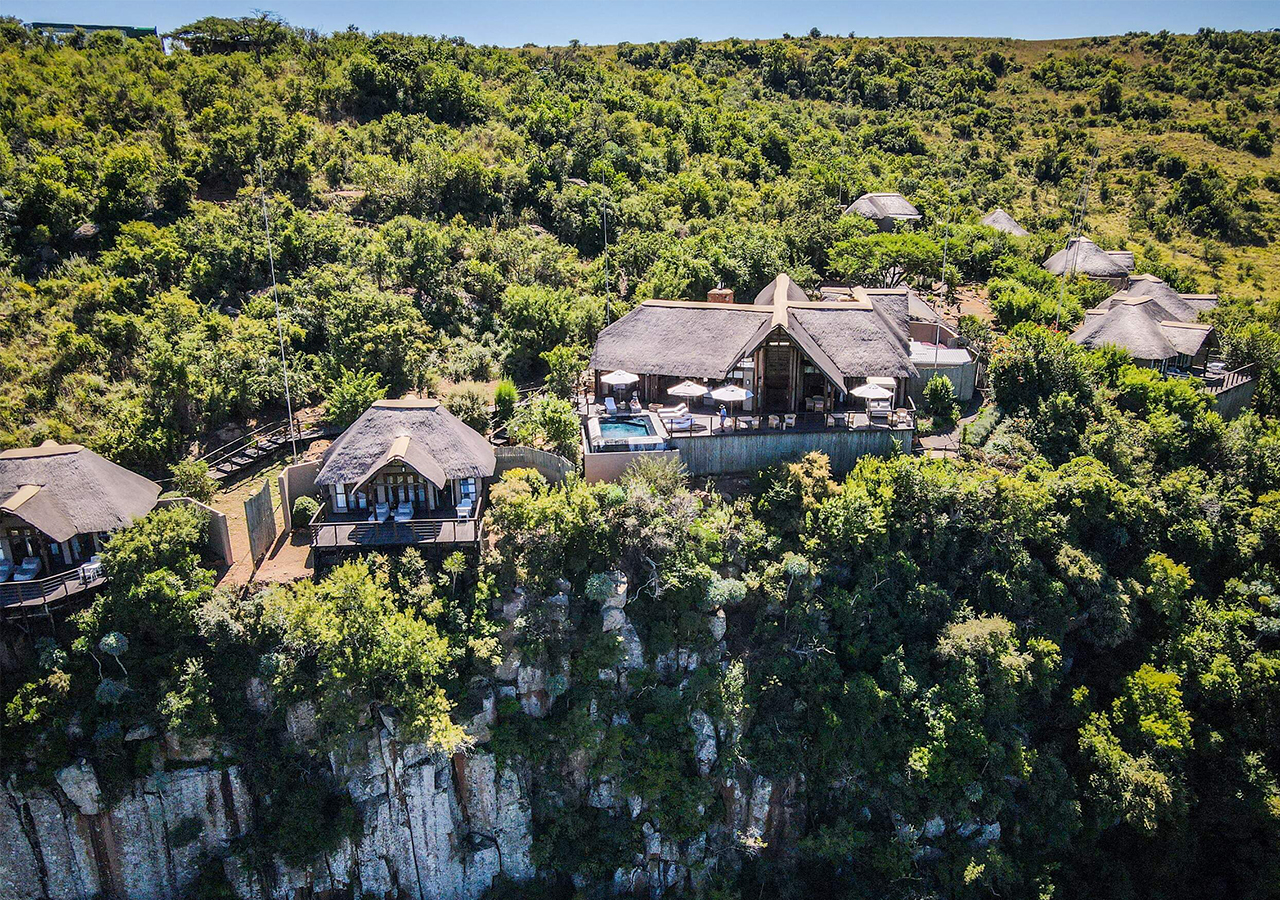
The golden years of French classicism
Château Louise de La Vallière, Reugny, France
Between Tours and Amboise, in the Loire Valley, Château Louise de La Vallière is named after Louis XIV’s first official favorite. From behind the machicolations of its gates–remnants of the old fortress through which keepers could drop stones, or boiling oil onto unwelcome visitors–and in the shelter of the magnificent 16th-century Henri II pavilion, you’ll find superb silk tapestries, fabrics and furnishings carefully curated by decorator Jacques Garcia. Expect an exceptional immersion in the Age of Enlightenment, enhanced by the period costumes worn by the property’s staff.
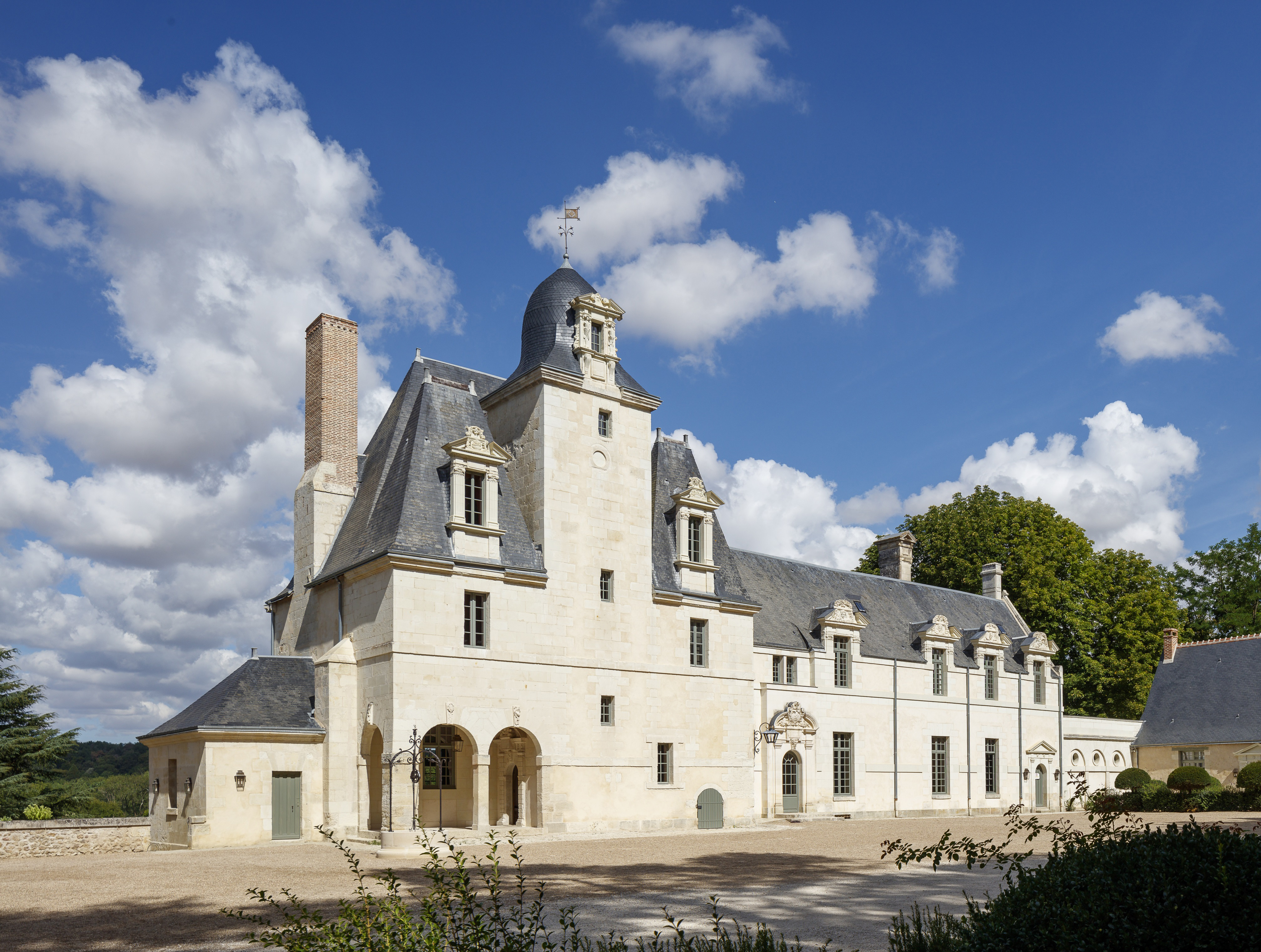
A cocoon in the desert
Mii amo, Sedona, Arizona, United States
When you think of Mii amo, the first thing that comes to mind might be well-being and meditation. Nestled among the extraordinary red rocks of Boynton Canyon in Arizona, the building is designed as an extension of the panorama. “Every detail reflects the surrounding landscape,” explains architect Dana Tang, who designed the site in 2001 and took charge of its renovation 20 years later. Terracotta-colored concrete, tactile adobe bricks, wood and stucco prolong the hues and textures of the sublime Arizona desert.
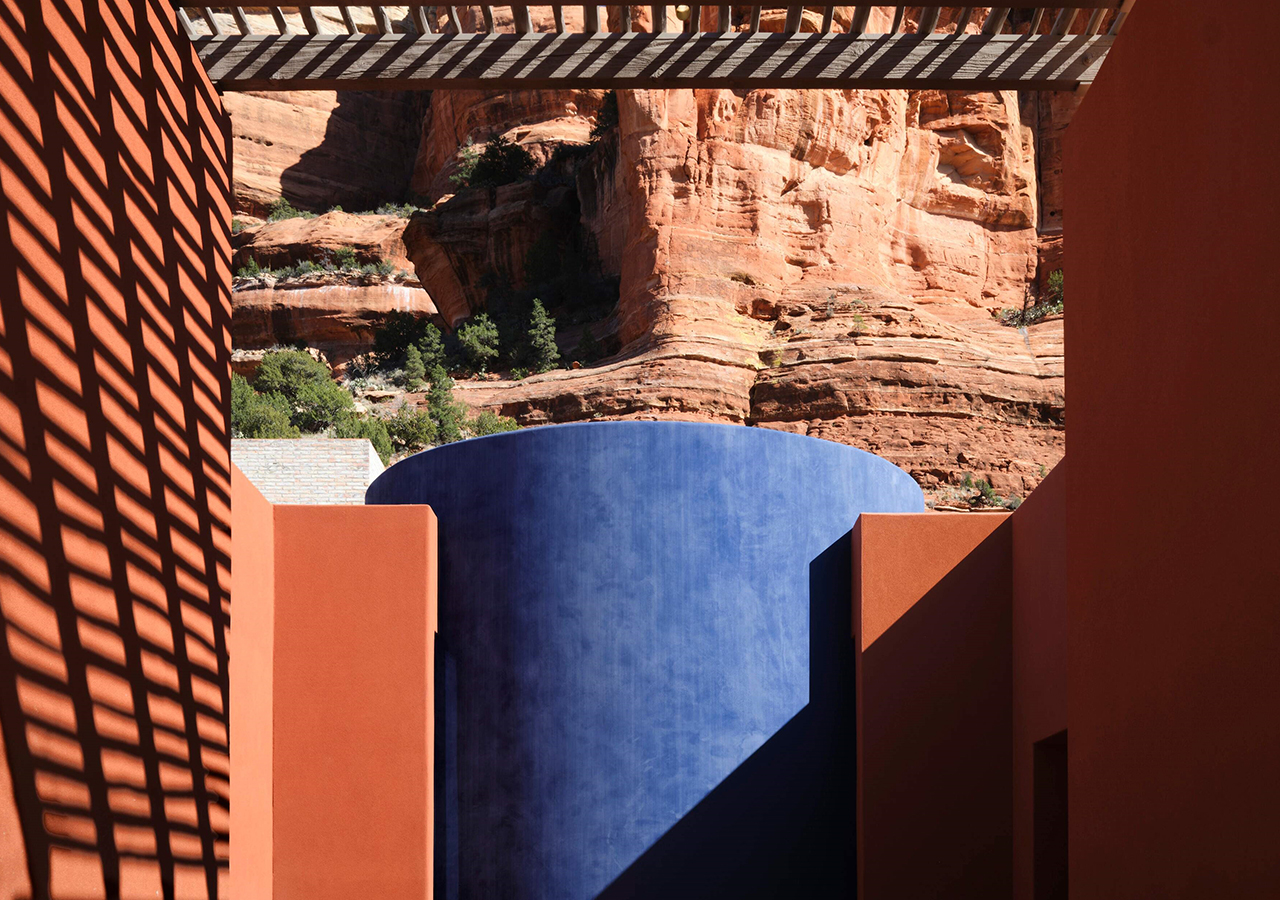
Exquisitely streamlined
Laura at Pt Leo Estate, Merricks, Australia
If the concept of Pt. Leo Estate appeared on a figurative map, it would be at the junction of wine, food, art and nature. The Laura at Pt. Leo Estate features vast windows that overlook a park of giant sculptures, the estate’s vineyards and spectacular ocean vistas. The building’s curved lines, designed by Jolson Architecture, evoke the winemaking process, inviting the senses on a voyage that culminates with the spectacular cuisine of Culinary Director Josep Espuga at Laura. Don’t miss this chance to sample the collective creative talents of the Australian continent.

Light shelter, bright experience
SUJÁN The Serai, Jaisalmer, India
Due east of the city of Jaisalmer, a 12th-century ‘Golden Fortress’ and UNESCO World Heritage Site, SUJÁN The Serai is a reflection of the royal caravan sites of Rajputana— only assembled from September to April. There are no conventional buildings in this desert camp, set on a 100-acre/40-hectare private estate, designed entirely from local sandstone and cream colored canvas. The best way to discover the sublime Thar Desert.
